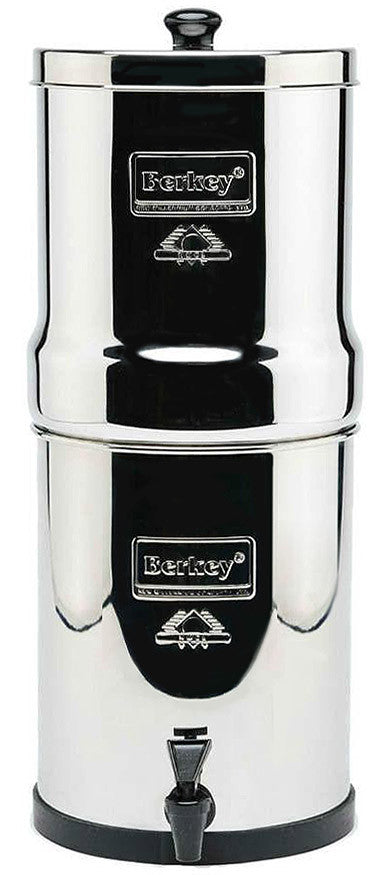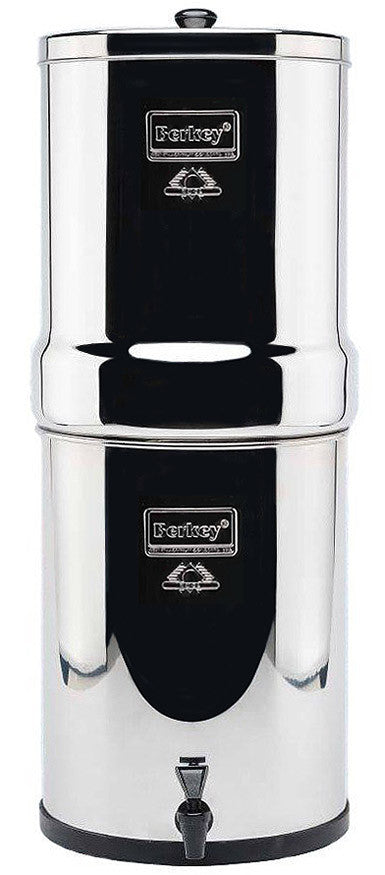Dechlorinate Tap Water: The Process of Dechlorinated Water
 In the United States, most public water supplies are disinfected with chlorine or chloramines (a blend of chlorine and ammonia).
In the United States, most public water supplies are disinfected with chlorine or chloramines (a blend of chlorine and ammonia).
For sanitization, chlorine is added as a gas or fluid (regularly as sodium hypochlorite) to deliver a free chlorine residue of 0.5 parts per million (ppm) to 2.0 ppm. Sadly, chlorine and its associated mixtures and compounds are oxidizing agents that can negatively impact clinical and modern strategies or cycles.
Indeed, even low centralization of chlorine can break a patient's red blood cells during hemodialysis.
These mixtures can also cause pressure breaks in stainless steel, alter and harm active pharmaceutical ingredients, or cause side effects and symptoms. Water treatment systems are no exception; reverse osmosis membranes and ion exchange resins will deteriorate and degrade when chlorine is present.
Free chlorine and chloramines can be eliminated in more ways than one, as depicted in the list below:
Adsorption Dechlorination
This can be performed with many kinds of activated carbon. Yet, granular activated carbon (frequently 12 x 40 lattice size), or GAC, is the structure most commonly used in large water treatment filters.
Free chlorine removal is the consequence of home time in contact with the carbon instead of filter surface stacking, so standard plans have stream rates of two (2) to three (3) gpm/ft3 of bed. Chloramines are harder to eliminate than chlorine.
Chloramines require a drawn-out time of contact with the activated carbon, alluded to as empty bed contact time (EBCT).
Chemical Dechlorination
Reduction reactions from sulfites, bisulfites, or metabisulfites can eliminate chlorine. This process prevents a favorable bacterial environment from being present upstream of the remainder of the water treatment framework.
Notwithstanding, downstream medicines, such as deionizers, may become contaminated by specific particles and ions (for example, chloride, sodium, sulfate, and others) that are present or generated through chemical reduction. An oxidation-reduction potential (ORP) or continuous chlorine screen is typically needed. Hardware to regulate the chemical feed into the feedwater may also be expected.
This strategy for dechlorination additionally requires the treatment of perilous and musty powders and/or fluids. These diminishing agents respond with oxygen in the air and water and, in this manner, must be reconstituted habitually because of loss of structural strength.
Ultraviolet Light Dechlorination
Another method for eliminating chlorine is the use of ultraviolet light. This focused-energy technique utilizes an expansive range of bright light to separate free chlorine and chloramines, transforming them into hydrochloric acid. The total organic carbon (TOC) decrease process utilizes different nanometer frequencies for specific mixtures.
For example, free chlorine typically decreases with one hundred eighty-five (185) nanometer frequencies, while chloramines require 245-365 nanometers.
The bright portion expected for dechlorination is 15-30 times higher than for ultraviolet disinfection. Likewise, ultraviolet dechlorination doesn't spread bacteria and is highly effective at cleaning water and reducing total organics.
With all that said, how do you dechlorinate tap water? What is the process of dechlorinating water? How does it work, and what elements does it include? In this article, we will talk about how to dechlorinate tap water.
Dechlorinating Water Vs. Chlorinated Water
 Dechlorinating Water
Dechlorinating Water
Dechlorination eliminates chlorine from water (e.g., sanitized wastewater) before releasing it into the environment. It is performed because chlorine can clog stores on the inside edges of modern hardware, cause medical problems (e.g., choking), or lead to erosion.
Water is chlorinated for sterilization purposes, making it suitable for modern use. Nonetheless, chlorine is poisonous to numerous sea-going species. Thus, the water should be dechlorinated before delivery or removal.
Dechlorination is normally achieved by adding sulfur dioxide or sulfite salts, such as sodium sulfite, sodium bisulfite, or sodium metabisulfite. These are the least expensive arrangements available; however, alternative techniques, such as carbon adsorption, are also available.
Benefits of dechlorinated water:
Limits damage to oceanic species from contact with toxic chlorine
Forestalls the formation of harmful chlorinated compounds in drinking water
Forestalls the gathering of chlorine in the joints and empty pores of modern hardware that might prompt erosion
Chlorinated Water
Chlorination is one of the numerous strategies for cleaning water. This technique was first used a while ago and is still used today. Chemical disinfection involves using various forms of chlorine or chlorine-containing substances to oxidize and sanitize the drinking water source.
Moreover, chlorination adds chlorine to drinking water to kill parasites, microbes, and infections. Various cycles can be utilized to accomplish safe chlorine levels in drinking water.
Utilizing or drinking water with limited chlorine doesn't cause unsafe health impacts and protects against waterborne sickness episodes.
DIFFERENT WAYS TO DECHLORINATE TAP WATER
 Perhaps you're concerned about the side effects of chlorination in your regular water, or you may want to avoid the taste or smell of faucet water with high chlorine content. Notwithstanding, knowing how to dechlorinate drinking water can be valuable information in your back pocket.
Perhaps you're concerned about the side effects of chlorination in your regular water, or you may want to avoid the taste or smell of faucet water with high chlorine content. Notwithstanding, knowing how to dechlorinate drinking water can be valuable information in your back pocket.
Filtration
If your objective in dechlorinating is to acquire pure drinking water, consider investing in a carbon filter or a reverse osmosis system. However, many water filters are equipped to eliminate chlorine.
Activated carbon filters typically remove natural organic matter, chloramines, and chlorine from water. Many carbon filters can be connected to the tap water supply outside your home, or you can also use a pitcher with a built-in carbon filter.
The reverse osmosis filters also eliminate ions and particles from tap water. You can connect the reverse osmosis filter directly under your sink or where your water supply goes into your home.
Since filters can often be easily added to a home's water supply, they are typically the most cost-effective choice for dechlorination. Remember, in any case, all channels should be changed or replaced in the long run.
Boiling Method
Next on the list is a relatively free technique for dechlorinating water. Simply put, you can heat your tap water, which should be possible in any pot oven, for around twenty (20) minutes.
Boiling your tap water will cause the chlorine to vanish, bringing the chlorine solution to a temperature where it will more rapidly become a gas. Before drinking the water (or adding it to the fish tank), let it cool to room temperature or refrigerate it to chill.
Rather than heating the water, you could let a pot or can of uncovered water sit outside in the sun, exposed to ultraviolet light, for twenty-four (24) hours.
This will permit the chlorine to vanish through off-gassing and UV exposure normally. If you have a particularly large tank of water to dechlorinate, this technique might be simpler than boiling or bubbling water.
Suppose you decide to dissipate or evaporate the chlorine normally. In that case, the exact time required will depend on various variables, including the underlying chlorine concentration in the water and the amount of sunlight exposure.
Also, the more profound and restricted the holder, the longer it will take to dechlorinate. Under ideal circumstances, you can occasionally check the chlorine levels with a small chlorine test kit.
Furthermore, it should be noted that evaporation (whether natural or through boiling) doesn't eliminate all chloramine, which is sometimes utilized as an elective sanitizer in addition to chlorine.
This is because chloramine is stronger and isn't transformed into fume as effectively as chlorine. That said, check what sort of sanitizer your local area uses in tap water.
Vitamin C or Vitamin C powder
Vitamin C, or L-ascorbic acid, is a more effective substance for neutralizing chlorine. Two types of Vitamin C, ascorbic acid and sodium ascorbate, will kill or at least "neutralize" chlorine.
Do not worry; it is also not viewed as a perilous substance. Firstly, Vitamin C doesn't break down or dissolve oxygen as effectively as sulfur-based synthetic compounds do. Second, Vitamin C isn't poisonous to oceanic life at the levels utilized for dechlorinating water.
Even though ascorbic acid is somewhat acidic and, in large quantities, will lower the pH of the treated water, sodium ascorbate is neutral. It won't influence the pH of the treated water or the receiving stream.
The two types of Vitamin C are stable, with a shelf life of at least one year when stored in a dry, cool, dark place. Whenever it is set in an arrangement, however, Vitamin C can easily degrade in a short while.
Adding Vitamin C is a good choice for eliminating chlorine or chloramine from tap water. It is often used to reduce or eliminate chlorine in large quantities of water, such as pools, hot tubs, and showers.
This implies investing in L-ascorbic acid powder or tablets. The expense can increase depending on how much water you want to dechlorinate and how regularly you do so.
Nonetheless, L-ascorbic acid is more effective in eliminating chloramine than the sun or boiling options previously mentioned. Around 45 mg of L-ascorbic acid will dechlorinate 4 liters (a little more than a gallon) of water treated with chloramine or chlorine.
Chemical Dechlorination
Chemical dechlorination agents can be a successful method for decreasing chlorine fixation in tap water.
They are particularly famous for their fish tanks and for dechlorinating water before returning it to its natural habitat, such as a stream or lake. These items are also known as water conditioners or tap water conditioners.
There are, for the most part, two common methods for chemical dechlorination.
Either using sulfur dioxide gas (SO2) or expanding liquid sulfite compounds like sodium bisulfite or sodium metabisulfite, commonly known as SMB.
Sulfur Dioxide Gas
Sulfur dioxide (SO2) is a nonflammable, colorless gas with a stifling, sharp scent and a thickness greater than air. It quickly disintegrates in water to form a powerless arrangement of sulfurous acid (H2SO3), which separates to create sulfite ions (SO3)- 2, the dynamic dechlorinating agents.
As such, dechlorination limits the impact of potentially harmful sterilization side effects by eliminating the free chlorine or adding up to a consolidated chlorine residual that remains after chlorination.
Dechlorination is achieved by adding sulfur dioxide or sulfite salts (i.e., sodium sulfite, sodium bisulfite, or sodium metabisulfite).
Sulphite Compounds
Sulfite compounds are frequently used as aqueous solutions, primarily in establishments where sulfur dioxide isn't feasible or where the use of sulfur dioxide gas is considered a risk.
The fluid sulfite solutions are applied to the cycle utilizing metering siphons, usually digital stepper motor-driven diaphragm pumps.
Dosing control and cycle checking of such dosing systems are considerably more complex and require more instrumentation than those used for sulfur dioxide dosing systems.
Four sulfur compounds are considered elective chemicals to sulfur dioxide for dechlorination: sodium sulfite, sodium bisulfite, sodium metabisulfite, and sodium thiosulfate.
Sodium sulfite is just as accessible as a white powder or precious stone. It is incredibly challenging to deal with, as it is unequivocally hygroscopic and, in this way, limited in its effectiveness as a dechlorinating agent.
Conversely, sodium thiosulfate is delayed with chlorine; it isn't manageable for metering applications and is often considered for use as a research facility specialist.
Subsequently, sodium bisulfite and sodium metabisulfite are considered pragmatic for compound dosing frameworks expected for dechlorination.
← Older Post Newer Post →





